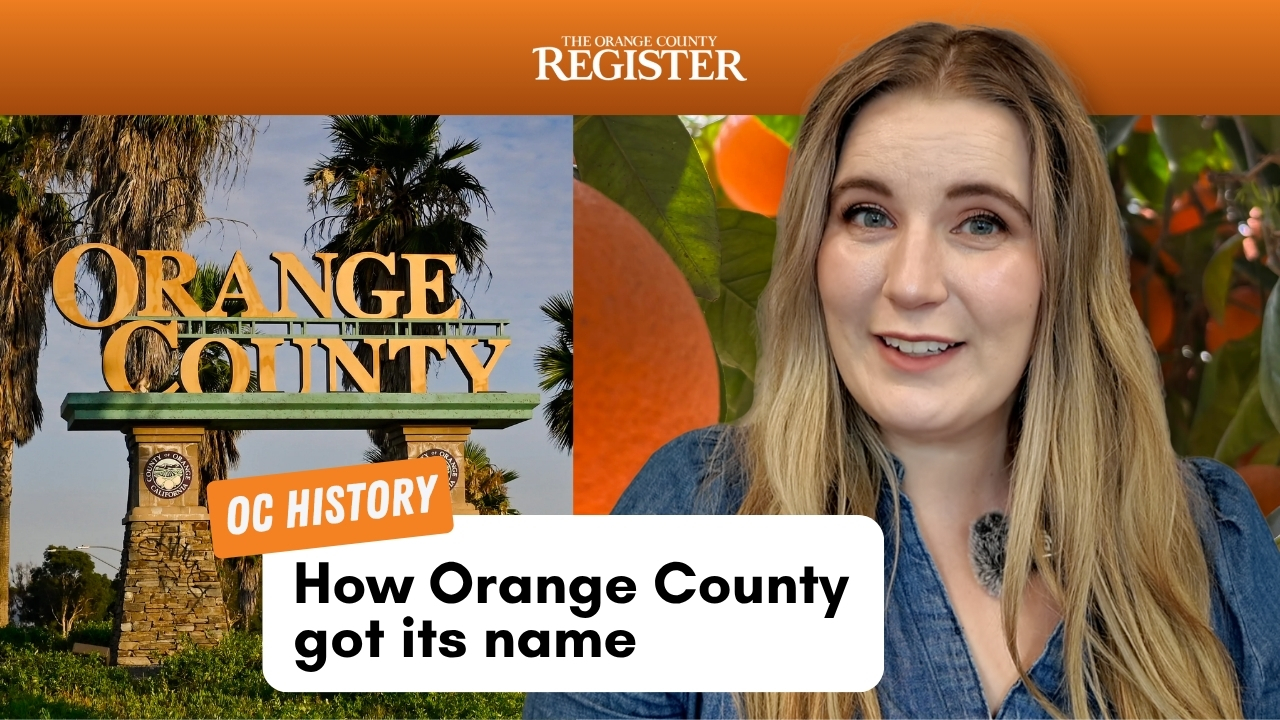Which came first, the Orange Groves or the name Orange County? The story is a bit juicy.
While some might think the Southern California region got its name from the fruit, it turns out that when the name was first proposed over 100 years ago, there weren’t many orange groves in the area.
But let’s go back in time a bit more. When California was first established into counties on February 18, 1850, there were only 27 counties, with the area we now know as Orange County originally being a part of Los Angeles County. Today, there are 58 counties in the Golden State – nearly twice as many.
After the original counties were decided, there was already some rearranging happening. In 1852 the border of Los Angeles County went as far north as Santa Barbara County, as far south as San Diego County, and went all the way to the border of Nevada. Meaning at one point Los Angeles County didn’t just include LA, but also Orange County, Riverside County, San Bernardino County and Ventura County.
However, the following year in 1853 San Bernardino County was established, and with it the early days of the Inland Empire.
Thanks to railroads and real estate, there was rapid growth in the southern end area of Los Angeles County in the 1870s and 1880s, creating a momentum of residents who wanted to separate and form a new county. However, there were two things working against this, Los Angeles County officials didn’t want to separate, and those who were in favor couldn’t decide on a name.
The City of Anaheim, the first city in the proposed new county, was leading the charge to name the area Anaheim County. However, others proposed the idea of Orange County.
Orange County was officially established on March 11, 1889 with Santa Ana as the county seat. The area included three incorporated cities, Anaheim, Santa Ana and Orange, and a population of about 15,000.
At the time the name was confusing to those who lived there because there wasn’t a single orange grove in the region.
That’s right, Orange County wasn’t named after the now famed orange groves. The ones that Walt Disney walked through when first finding the space for Disneyland? They didn’t even exist when Orange County was established. There were just a few scattered orange trees throughout the county.
So why the name? Well, it sounded nice. You see California as a state was being promoted to others as a “semi-tropical” paradise right along the coast, and the name Orange County fit that vibe.
While the orange is not native to California, there are two main types of oranges the Golden State is known for: the Valencia orange and the Navel orange.
The origins of the Valencia Orange are a little harder to track down. Most agree that the orange first came from Spain before making its way to San Gabriel in the 1800s. The orange from Spain then hybridized with a local Southern California orange, giving us the sweet fruit we know today.
Nearby in Riverside, the orange was growing in popularity. As legend has it, Eliza Tibbets, an American activist who had recently moved to the area from Washington D.C., wrote to her friend who worked at the United States Department of Agriculture, asking for some fruit trees. She soon received two navel orange trees. Because of the ideal soil and weather conditions of Southern California, the trees grew to a greater size than usual and produced an improved flavor. Word of the sweet fruit quickly spread in the region.
It wasn’t until 1900 that orange trees became popular in the region, as California experienced what many referred to as a “second gold rush.” Millions of orange trees began to be planted, becoming the county’s main crop, and with it, the state saw a boom in investors and agricultural workers.
Orange County later grew into its name. The city of Orange became one of the centers of the local citrus industry and by 1929 Orange was producing more than $12 million in oranges.
Part of that came from good marketing. The Southern California Fruit Exchange, founded in Claremont, California in 1893, led a marketing campaign to promote their “Sunkist” oranges and compete with apples, convincing customers that orange juice was the best way to start the day. The group sold more than 75% of the Golden States citrus in the 1930s, and eventually renamed itself to Sunkist Growers, Inc. in 1952.
Unfortunately, as the area rose in popularity, the orange groves were replaced by housing, with only a few of the original orange groves throughout Southern California still in existence.
Only a few of the original orange groves that made up Southern California exist today, and they’re becoming less and less. California Citrus State Historic Park in Riverside still has 250 acres of groves. Elsewhere, Bothwell Ranch, the last remaining commercial groves in the San Fernando Valley, has shrunk from a 100-acre grove to 14 acres, with plans in development to turn most of the land into housing.
But for those who want to see where the oranges of Southern California first got their start, the over 150 year old parent navel orange tree that was planted by Eliza Tibbets is available to visit in Riverside.
